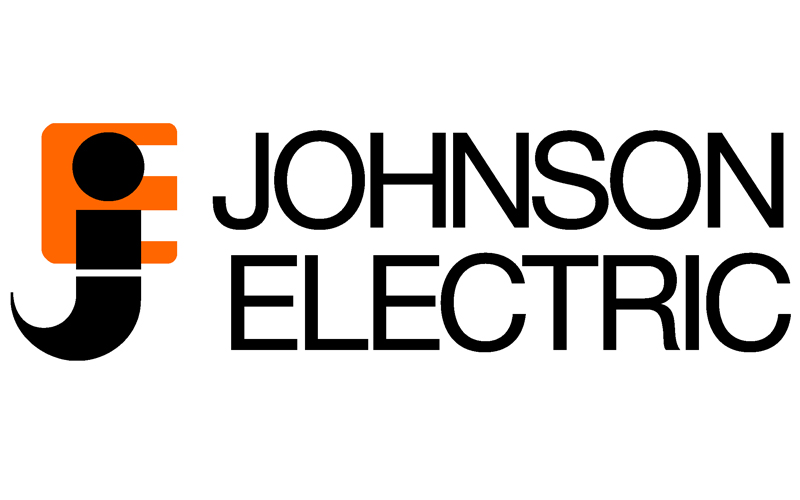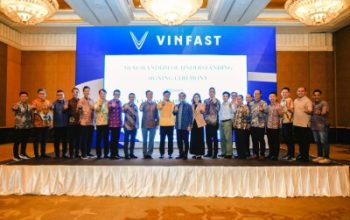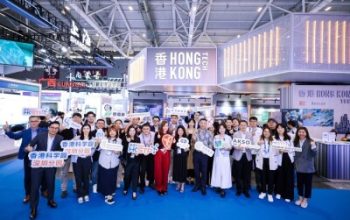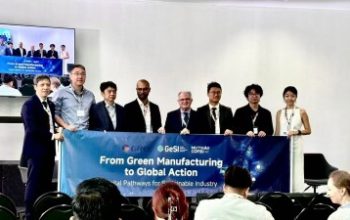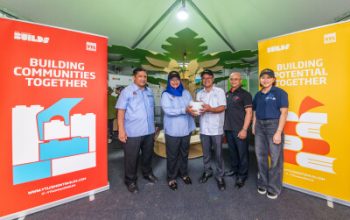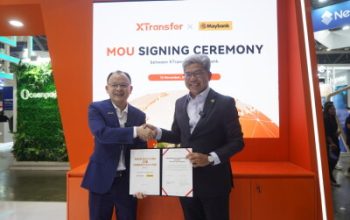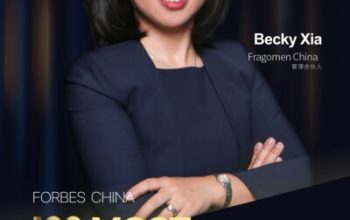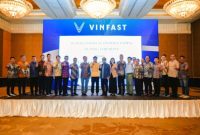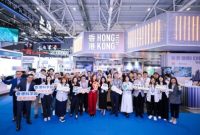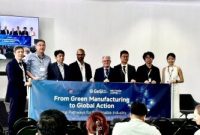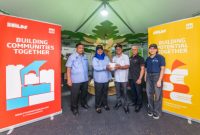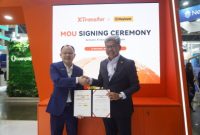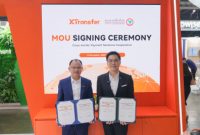Highlights of FY21/22 Half-Year Results
- Group sales US$1,674 million – up 26% compared to first half of the prior year. Excluding the effects of foreign currency movements and an acquisition, sales increased by 21%
- Gross profit US$357 million or 21.3% of sales (compared to US$300 million or 22.5% of sales in first half of the prior year)
- Adjusted EBITA US$138 million (compared to US$135 million in first half of the prior year)
- Net profit attributable to shareholders decreased by 8% to US$93 million or 10.36 US cents per share on a fully diluted basis
- Underlying net profit, excluding the net impact of restructuring costs and non-cash items, decreased by 2% to US$96 million
- Decline in profit margins as a result of various factors, including global supply chain disruptions, commodity price increases and reduced COVID-19 related subsidies
- Free cash outflow from operations US$56 million (compared to a free cash inflow of US$68 million in first half of the prior year)
- Acquisition of E. Zimmermann GmbH, a specialist automotive machining business based in Germany
- Total debt to capital ratio of 18% and cash reserves of US$487 million as of 30 September 2021
- Interim dividend 17 HK cents per share (2.18 US cents per share) with a scrip dividend alternative
HONG KONG SAR – 11 November 2021 – Johnson Electric Holdings Limited (“Johnson Electric”), a global leader in electric motors and motion subsystems, today announced its results for the six months ended 30 September 2021.
Total Group sales for the first half of FY21/22 totalled US$1,674 million, an increase of 26% over the first half of the prior year. Excluding the effects of foreign currency movements and an acquisition, sales increased by 21%. Net profit attributable to shareholders decreased by 8% to US$93 million or 10.36 US cents per share on a fully diluted basis. Underlying net profit, after adjusting for the effects of a number of non-cash items and restructuring costs, decreased by 2% to US$96 million.
Automotive Products Group
The Automotive Products Group (“APG”), which accounted for 76% of total Group sales, reported a 21% increase in sales on a constant currency basis and excluding an acquisition. A significant part of this increase relates to the fact that in the period from late March to May 2020, much of Johnson Electric’s automotive component operations in Europe and the Americas were effectively shut down due to the pandemic.
Although direct comparisons with the same period in the prior year are therefore somewhat misleading, APG achieved sales growth well above global auto industry production growth of approximately 6% during the six months from April to September 2021. The drivers of this sustained outperformance are the division’s focus on innovative technology solutions that enable electrification, reduce emissions, improve fuel economy and heighten end-user comfort and safety.
APG’s sales performance on a regional level reflected both variations in the progression of the COVID-19 pandemic and the disruptive impact of several supply chain bottlenecks that have hit the global automotive sector over the period under review.
In Europe and the Americas, APG’s sales in constant currency and excluding an acquisition increased by 34% and 29%, respectively. As previously noted, the majority of this growth was achieved as OEM assembly plants in these regions were no longer closed for pandemic containment reasons and end-market consumer demand for passenger vehicles was exceptionally strong. However, throughout the period under review, the automotive industry struggled to cope with a prolonged shortage of semiconductors and other components. This has required all major auto OEMs to make frequent changes to production schedules, suspend production of selected vehicle models and temporarily close some factories entirely. In Europe, these disruptions to supply resulted in the lowest number of new passenger vehicle registrations in the month of September since 1995.
APG’s sales in Asia increased by 8% in constant currency terms. Light vehicle production volumes in the region were flat compared to the same period in the prior year, with China’s production volumes declining by 11%. China’s economy recovered quicker from the impact of the pandemic in 2020 and hence the weakness of its automotive industry compared to the prior year’s April to September period was largely a reflection of the global microchip shortage and a subdued domestic consumer economy. Demand and production activity in Southeast Asian markets were also negatively impacted by a resurgence in COVID-19 in several countries.
Industry Products Group
The Industry Products Group (“IPG”), which accounted for 24% of total Group sales, reported a 19% increase in sales on a constant currency basis compared to the first half of the prior year.
The changes to consumer behaviour and purchasing preferences that emerged during the pandemic remained a strong growth driver for many of the product applications served by IPG during the first half. Lawn and garden, white goods, window automation, beverages, power tools and other “home-centric” segments experienced particularly high sales growth due to a combination of recent programme launches, new business wins and increased market demand. Sales in the medical segment also increased, as automated surgical tools took market share from manual medical devices.
The global supply chain constraints that have weighed on the automotive sector also held back production in several of IPG’s end markets. In addition to semiconductor shortages, these included shortages in other materials and components, and disruptions to shipping schedules. Notwithstanding these supply challenges, IPG’s order book throughout the period remained at among its highest levels in recent years.
Profitability and Financial Condition
Gross profit increased by 19% to US$357 million – which as a percentage of sales represented a decline from 22.5% to 21.3%. The decline in the gross margin reflected a combination of factors. Rising labour costs, exacerbated by the inefficiencies caused by components shortages and disruptions to customer production schedules, adversely affected the gross margin. Furthermore, the significant reduction in pandemic-related subsidies and the ending of one-off cost-saving initiatives, as well as the marked increase in underlying raw materials costs (partially offset by hedging contracts) also reduced the gross margin.
Group operating profits amounted to US$117 million compared to US$122 million in the first half of the prior year. The reduction in reported operating income and in net profit attributable to shareholders was primarily due to the substantial increase in freight and logistics expenses that was only partly offset by an increase in the net contribution from Other Income.
The COVID-19 pandemic and its repercussions has created an unprecedented shock to the container shipping sector. The whiplash effect of demand collapsing and then rebounding sharply has resulted in an imbalance in the availability of containers worldwide – with a significant shortage in Asia. Events such as the blockage of the Suez Canal and spikes in COVID-19 cases in several major container ports have further disrupted the normal operations of the global logistics supply chain. As a result, spot market prices for shipping containers on some routes have soared by more than five times their average price over the previous five years.
Excluding costs related to the restructuring of the Group’s manufacturing footprint and non-cash items mostly related to foreign currency movements, the underlying net profit margin for the first half decreased to 5.8% compared to 7.4% in the first half year of the prior year.
Higher inventories in response to the rebound in end-market demand and increased capital expenditure on automation and development of the Group’s manufacturing footprint resulted in a free cash outflow of US$56 million for the period. Johnson Electric’s financial condition remains robust with a total debt to capital ratio of 18% and cash balances of US$487 million as of 30 September 2021.
Interim Dividend
The Board has today declared an interim dividend of 17 HK cents per share, equivalent to 2.18 US cents per share (2020 interim: 17 HK cents per share). The interim dividend will be payable in cash with a scrip alternative where a 4% discount on the subscription price will be offered to shareholders who elect to subscribe for shares. Full details of the scrip dividend alternative will be set out in a circular to shareholders.
The interim dividend will be payable on 12 January 2022 to shareholders registered on 2 December 2021.
Corporate Strategy and Development
Johnson Electric is now into its seventh decade of providing motion solutions to customers worldwide. Although we are operating in a world where the pace of technological change has never been faster or more unpredictable, the range of opportunities open to our business has never been greater.
Several long-term trends driving consumer demand, including increased electrification, emissions reduction, automation, mobility, healthcare and safety, are dependent on the types of product offering and technologies that are at the heart of what we do as a business. Our R&D efforts are therefore focused on anticipating and meeting these customer needs through innovative designs that deliver optimum performance at an attractive price.
Sustaining success over the long term, however, requires a recognition that the context and competitive environment in which we are operating is never stable. Examples include the reintroduction of trade barriers because of rising geopolitical tensions, the shock of the COVID-19 pandemic and, most recently, a near “perfect storm” of disruptions to global manufacturing supply chains.
Our response to these challenges is, in part, to drive forward with the investments we have been making over several years to adapt the shape and nature of our global operations. This means building large-scale production and engineering capabilities in each of the three major economic regions of the world to reduce dependence on any one region and to be closer to our end customers. It also requires investing in advanced, automated production platforms to improve quality and address the increasing scarcity and rising cost of direct labour.
In addition to those significant investments, we are working hard to combine the latest advances in digital technology and our own deep pool of business and product data to enable dramatically faster response times to customers.
The ultimate goal of our strategy is to ensure that our business is aligned with the most promising opportunities for profitable growth and equipped with an operating model that is sufficiently agile and resilient to succeed in rapidly changing conditions.
Supplementing the organic transformation of Johnson Electric’s business model, we are continuing to pursue external opportunities to leverage our existing capabilities and create new growth options.
In May 2021, we completed the acquisition of E. Zimmermann GmbH, a specialist machining business based in Germany. The combination of Zimmermann’s know-how in machining automotive differential housings with Stackpole’s powder metal expertise is set to open a new opportunity for the Group to expand its presence in power transmission systems in new energy vehicles.
In October 2021, IPG formed a new joint venture company with Cortica Ltd., an Israel-based leader in the field of autonomous artificial intelligence. Leveraging Johnson Electric’s experience across a wide range of manufacturing processes with Cortica’s unique self-learning technology, this new business enterprise will focus on developing and marketing AI-driven quality assurance software for industrial automation processes.
Chairman’s Comments on the Half-Year Results and Outlook
Commenting on the results, Dr. Patrick Wang, Chairman and Chief Executive, said, “Johnson Electric experienced a strong recovery in demand in the six-month period ended 30 September 2021, as most major economies rebounded from the COVID-19 global pandemic. That rebound has been accompanied by a number of widely reported supply chain headwinds that have had a negative impact on the Group’s margins and are continuing to present a challenge to global manufacturing enterprises.”
“The rather mixed picture of the first half of the 2021/22 financial year looks set to continue in the second half. On the one hand, end-market demand remains buoyant and the Group continues to win new business programmes and market share in many of the fastest growing product applications for both our automotive and industry products divisions. On the other hand, there is no clear sign that the global supply chain disruptions and inflationary forces that hampered operations and depressed profit margins in the first half are behind us.”
“The prolonged shortage of semiconductors continues to weigh heavily on the automotive sector and looks likely to persist through all of 2022. High raw material and logistics costs, combined with rising labour rates, will also remain a burden on the business in the near term given the practical challenges and lag effect of passing additional costs on through pricing changes.”
Dr. Patrick Wang further commented, “Looking beyond the next six to twelve months, the prospects for improved profitability and cash flow generation are more encouraging given the strong customer pull for Johnson Electric’s technology solutions and the progress we are making in transforming our global manufacturing footprint and business processes.”
The Johnson Electric Group is a global leader in electric motors, actuators, motion subsystems and related electro-mechanical components. It serves a broad range of industries including Automotive, Smart Metering, Medical Devices, Business Equipment, Home Automation, Ventilation, White Goods, Power Tools, and Lawn & Garden Equipment. The Group is headquartered in Hong Kong and employs over 35,000 individuals in 22 countries worldwide. Johnson Electric Holdings Limited is listed on The Stock Exchange of Hong Kong Limited (Stock Code: 179).


